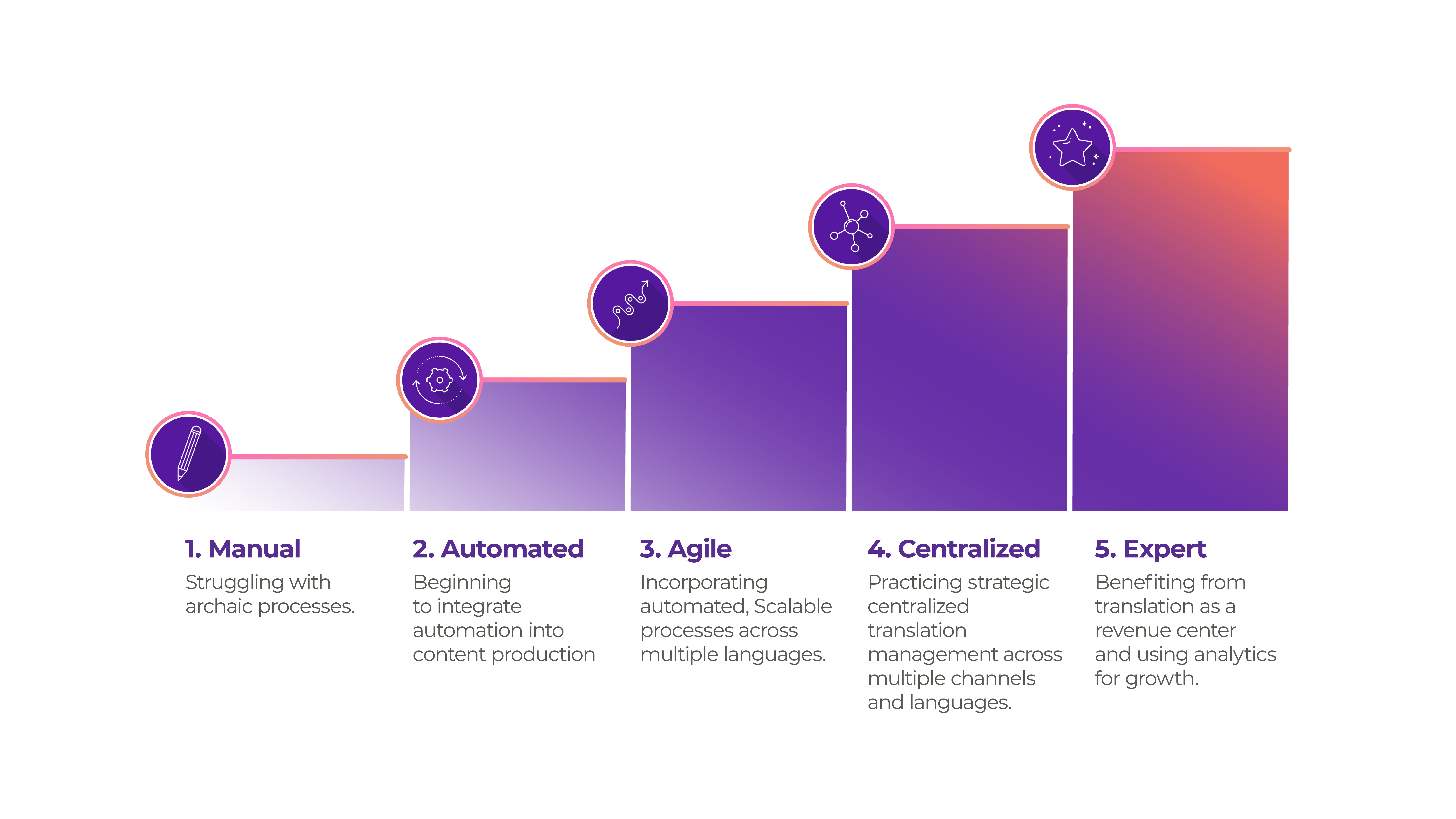If your business is translating content, you are somewhere on the localization maturity model. Where do you fit today? And where do you aspire to be?
The business value to moving up the ladder is that you’ll be able to do more with less. By automating and centralizing your localization efforts, your team can scale without increasing headcount, and get to market faster.
Localization Maturity Model Stages
Four Steps To Move Up the Model
- Evaluate your translation culture
Look at how your company makes decisions about adopting new processes and technology. Ensure you align your proposal for upgrading your localization process with the culture. Effective change management will play a huge role here. - Evaluate the data
Pull up any supporting data that exemplifies the successes of your global content and its reach to date, and areas for improvement. The successes can help you make the case to maintain a robust localization program, while the areas for improvement and optimization can lay the groundwork for why your company should invest more in localization. - Consider building out a dedicated localization program
To set up the most turn-key global content program across your organization, you will need to bring all localization needs under one roof. A dedicated localization manager can coordinate needs from the marketing, product, content and engineering teams to develop an organization-wide strategy for taking your brand global. - Look for opportunities to automate
Repetitive, manual tasks are the best candidates for automation. Email notifications and quality checks are two great examples of tasks that translation management technology can automate - and take off your team’s plate.








